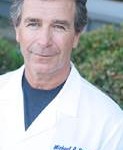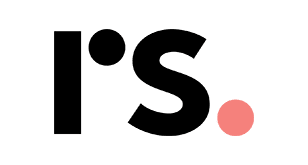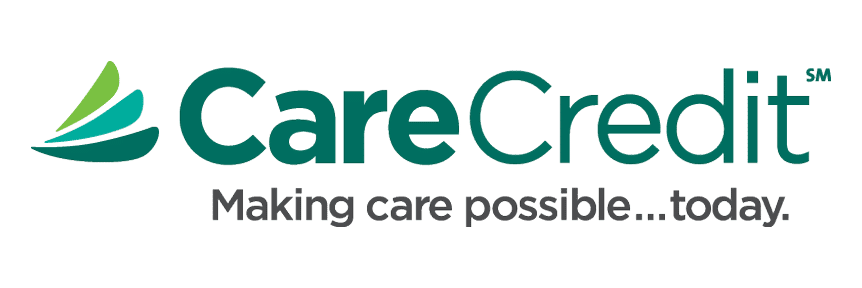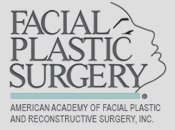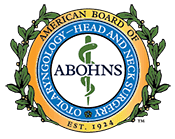Posted December 16, 2008 in Blog, Rhinoplasty, Uncategorized
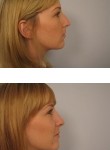
A rhinoplasty can change many things about your nose, including your nose size (in relation to your face), nose width at the bridge, the size and position of the nostrils, and nose profile (by downsizing visible humps, bumps or depressions on the bridge).
A rhinoplasty can also reshape the nasal tip, improve the appearance of large, wide or upturned nostrils and correct nasal asymmetry. From a functional standpoint, a rhinoplasty can correct certain breathing difficulties such as those due to a deviated septum. Rhinoplasty is also an option for certain birth defects or noses that have been injured in car or sports accidents
Here’s what you need to know now about rhinoplasty.
Rhinoplasty Defined
A rhinoplasty or nose job is a surgical procedure designed to reshape the nose. It can be done to correct a structural deformity (such as a bump or hook), provide subtle changes to nose size and shape to improve your appearance or to correct a functional problem (such as difficulty breathing due to a deviated septum).
The septum is the wall between the two nostrils. Composed of cartilage and bone, it divides the nasal cavity into halves. The ideal nasal septum is straight, separating the left and right sides of the nose into passageways of equal size. In contrast, a deviated septum occurs when the septum is severely shifted away from the midline. In severe cases, a deviated septum may cause difficulty breathing through the nose.
Are you a candidate for rhinoplasty?
We beleive that patients should give a great deal of thought to what bothers them about their nose as well as what would please them as a final rhinoplasty result. Changing one’s nose is not like getting different hair style or color. Hair color can be changed back to it’s original shade, and hair will grow back. Once a nose is reshaped, the original version will never return exactly the same. Therefore one of the first questions that we ask our patient in consultation is, “How long have you thought about rhinoplasty?” Another indication for rhinoplasty surgery is difficulty breathing through your nose, and having something about the appearance of your nose that you would like changed at the same time that your breathing is being surgically corrected. In this case often the change may be quite subtle, yet significant.
Preparing for Rhinoplasty
Your surgeon will likely give you a list of instructions before you undergo a rhinoplasty. In general, there is no eating or drinking after midnight on the evening before. Smoking cessation should occur before rhinoplasty, the longer the better, but even quitting a few weeks prior to surgery and not smoking during the recovery period is most helpful. Your surgeon may be able to provide tools to help you quit. In addition to all the other negative health affects associated with smoking, it severely compromises blood flow to the skin. This means there is less oxygen to aid in wound-healing, and necrosis (death) of skin can occur. Drinking alcohol in the week before rhinoplasty is also discouraged, as alcohol can also impair the healing process.
Your surgeon may also discuss discontinuing certain medications in the days or weeks leading up to your rhinoplasty. For example, non-steroidal anti-inflammatory drugs (NSAIDs) such as ibuprofen can increase the risk of bleeding. While considered natural, certain vitamins and herbal preparations such as Vitamin E, gingko biloba, omega-3 fatty acids and green tea can also increase bleeding risk. Tell your surgeon about everything that you are taking, even if it seems harmless. Never stop taking any medications without first discussing it with your doctor.
Some surgeons may prescribe homeopathic therapies before your rhinoplasty, such as arnica (an herb that can minimize bruising). In addition, mega-doses of vitamin C may also help aid clotting and wound healing. Some surgeons also prescribe steroids before a rhinoplasty to decrease the initial swelling.
Key Rhinoplasty Statistics
In 2007 there were 285,000 rhinoplasty operations performed in the United States, down 7 percent from 2006, according to statistics compiled by the American Society of Plastic Surgeons. Rhinoplasty is one of the top five cosmetic plastic surgery procedures performed each year.
Rhinoplasty Risks
Infection
Bleeding
Breathing issues (nasal obstruction)
Dissatisfaction with cosmetic results
Additional touch-up surgeries
Septal perforation. In these cases, there is a small whole in the septum, causing turbulence that results in a whistle when a person speaks or sings.
Anesthesia complications
Death
Fortunately these rhinoplasty risks and complications are extremely rare in the care of a qualified, experienced, skilled, and board certified Facial Plastic Surgeon.
Types of Rhinoplasty
Primary rhinoplasty is a nose-reshaping plastic surgery. Two types of primary approaches to rhinoplasty include “open” and “closed”:
Open Rhinoplasty. For major nose reshaping, the incisions are made in the vertical strip of skin separating the nostrils. This is called the columella. The skin and soft tissue are then elevated off the underlying structures of the nose so the surgeon can see the nasal anatomy. The open approach allows for precise adjust of the nasal cartilage and bone with secure suturing of nasal grafts.
Closed Rhinoplasty. For minor reshaping, many surgeons make incisions within the nose. The skin of the nose is then separated from the bone and cartilage, which form its supporting framework. Once exposed, bone and cartilage can be removed, reshaped, augmented or rearranged to achieve the desired new shape.
Secondary Rhinoplasty. Also called revision rhinoplasty, this is performed to correct problems that persist or develop after a previous rhinoplasty. Although the problems may be minor and easily corrected, often the problems are major, which makes the secondary rhinoplasty more difficult. Secondary rhinoplasty can also be done as an open or closed procedure.
Filler or Non-Surgical Rhinoplasty. This involves the use of injectable fillers to fill depressions, smooth out sharp angles or change the angle of the tip of the nose, restoring symmetry and making your nose appear smaller and more attractive. Instead of removing a bump, a surgeon would use an injectable filler to even it out. The results are not permanent.
We perform all of the types of rhinoplasty described above depending upon what our patient’s situation requires.
Evaluating Your Nose
Carefully choosing your rhinoplasty surgeon is the most important aspect of having your rhinoplasty. We are continually amazed at how some patients will spend more time on picking out the color of their new car than they spend on choosing their rhinoplasty surgeon.
An evaluation with a rhinoplasty surgeon is the first step in your decision to undergo rhinoplasty. During this meeting, your rhiniplasty surgeon will likely take photographs of your nose at varying angles. He or she will also talk to you about your expectations to make sure that yours are realistic.
It may be a good idea to bring photographs of noses that appeal to you, to aid in the dialogue about expectations as well as give the surgeon a better idea of what you want out of your rhinoplasty. In addition, your surgeon can show you photos of other rhinoplasty patients with similar nose shapes, which can help you better understand the likely results. We then use computer imaging to show how your nose may look after your rhinoplasty.
If you are having rhinoplasty, you may also need to consider other facial procedures to achieve balance and proportion. For example, chin augmentation is often performed with rhinoplasty. Other procedures that are sometimes performed with rhinoplasty are otoplasty (ear pinning) and blepharoplasty (eye lids).
The Rhinoplasty Procedure
Most rhinoplasties are performed on an outpatient basis in a hospital or surgical suite. Exactly how long the procedure takes depends on the type of rhinoplasty that is performed. For example, a primary rhinoplasty normally requires two to three hours in surgery, while a secondary rhinoplasty can take as long or much longer. A filler rhinoplasty can take just 15 minutes.
Anesthesia.
Your surgeon will likely recommend local anesthesia with some sedation or general anesthesia for your primary rhinoplasty. A secondary rhinoplasty will often involve general anesthesia due to the complexity of the procedure. A filler rhinoplasty requires just local anesthesia.
The Incision
Surgery of the nose is performed either using a closed approach procedure(where incisions are hidden inside the nose), or an open approach procedure(where an incision is made across the columella in an inverted V shape). The surgeon then raises the soft tissues that cover the nose through these incisions. This provides access to reshape the structure of the nose.
The Reshaping
Your surgeon can reduce or augment nasal structures with cartilage grafted from other areas of your body. Most commonly grafts are taken from inside the nose, the nasal septal cartilage. If not enough septal cartilage is available, then cartilage is taken from the ear or the rib.
Closing the incision
Once the underlying structure of the nose is sculpted, the nasal skin and tissue are redraped and the incisions closed.
Recovering from Rhinoplasty
You will probably be excited, if not anxious, to see your new nose, but patience is key after rhinoplasty. Complete results are not immediate and can take up to one year to be fully evident. Usually your new nose looks very nice after two to four weeks.
You will be unable to breathe through your nose for the first 24 hours, due to internal nasal swelling and crusting. Our practice only very rarely uses nasal packing, which is stuffed up the nose to help reduce bleeding by those surgeons who have not mastered the technique of no packing. Not packing the nose greatly decreases pain as well as swelling and bruising after rhinoplasty. Pain in our practice is usually more discomfort of having a stuffy nose, perhaps a feeling of sinus pressure headache. We recommend Tylenol, but give our patients an oral narcotic pain releiver just in case, and ask that they take the pain pill before going to sleep for the night. Most people who undergo rhinoplasty can stop pain medication after 48 hours. Some people feel nauseated after the surgery.
You may experience limited bleeding during the first day. Our patients usually have no bleeding after the first 24 hours. Your surgeon may also tell you to apply a cold compress (we prefer baggies of frozen peas) to your nose to reduce swelling and to elevate your head for the first 24 hours. It is important to avoid any trauma to the nose during the first weeks after surgery. Blowing your nose is not permitted for the first two weeks after rhinoplasty. This can be tough, as you may feel stuffy. We ask our patients to return to our office for the rhinoplasty surgeon to clean the inside of the nose, which helps improve the air way. Decongestants may help.
You will likely be asked to return in four or five days after surgery so the surgeon can remove the stitches. On day four or five, the nasal splint is removed. Your nose will still be swollen, but after two weeks much of the swelling will have decreased. At this point, all nasal packing, splints and other post-surgical dressings should be removed. A splint may be placed over the outer part of your nose to protect your nose as well as help it hold its new shape during the healing process. The surgeon may also place a softer splint inside your nose to prevent scarring inside the nose.
By one month, 85 percent of the swelling will have gone down. The remaining swelling may take up to one year. For these reasons, you should wait at least one year before undergoing revision rhinoplasty.
Rhinoplasty Cost
The cost of cosmetic surgery tends to comprise the surgeon’s fee, anesthesia fee, and operating room fee. The anesthesia fee ranges from $900 to $2,000, the facility fee ranges from $1200 to $2,400 and the rest of the cost is the surgeon’s fee which can range from $3,500 to $20,000.
The national average for plastic surgeon fees for rhinoplasty is $6,000. Secondary rhinoplasty can cost up to three times as much, due to its complexity. A filler rhinoplasty costs a few hundred dollars, but results are not permanent.
If you decide you need an additional facial procedure later (such as chin augmentation), the two procedures may be more expensive than if you have them at the same time.
Insurance does not typically cover the cost of cosmetic procedures, but if the purpose of your rhinoplasty is to improve breathing, it is considered reconstructive and may be covered by insurance. It is a good idea to contact your insurance company beforehand and find out their exact policy.
Consult a Qualified Rhinoplastic Surgeon
Before deciding on rhinoplasty, be sure to discuss treatment options with a board-certified plastic surgeon or a board-certified facial plastic surgeon. Most facial plastic surgeons do their residency training in otolaryngology-head-and-neck surgery, followed by fellowships in facial plastic surgery. Plastic surgeons do their residency training in general surgery followed by a fellowship in plastic surgery,
Plastic surgeons should be certified by the American Board of Plastic Surgery. Facial plastic surgeons should be certified by the American Board of Facial Plastic and Reconstructive Surgery. Board certification assures you that your surgeon has had extensive training and is up to date on new technology and techniques.
Source:
American Society of Plastic Surgery website article on nose surgery.
American Academy of Facial Plastic and Reconstructive Surgery website article on rhinoplasty.
